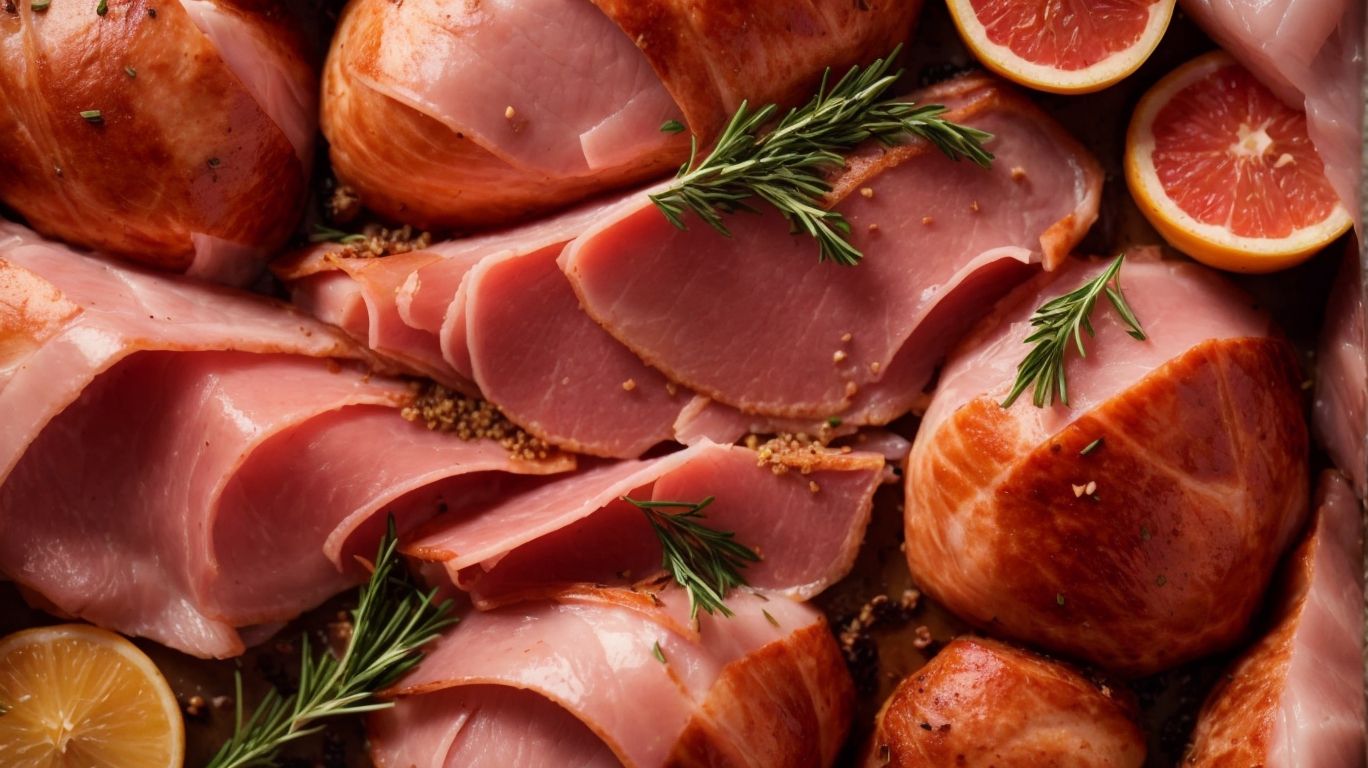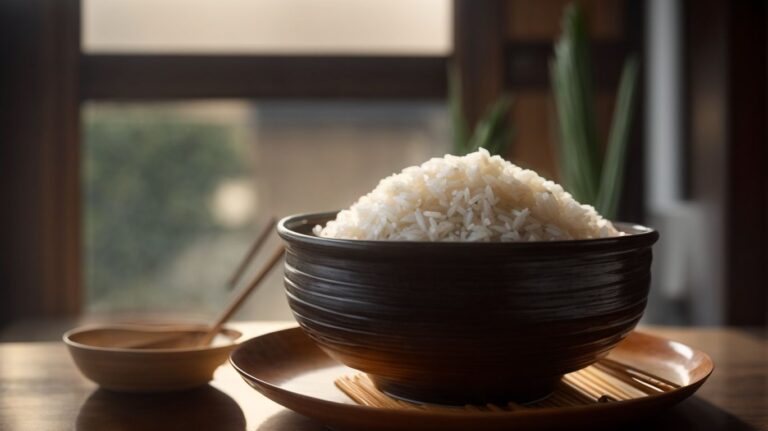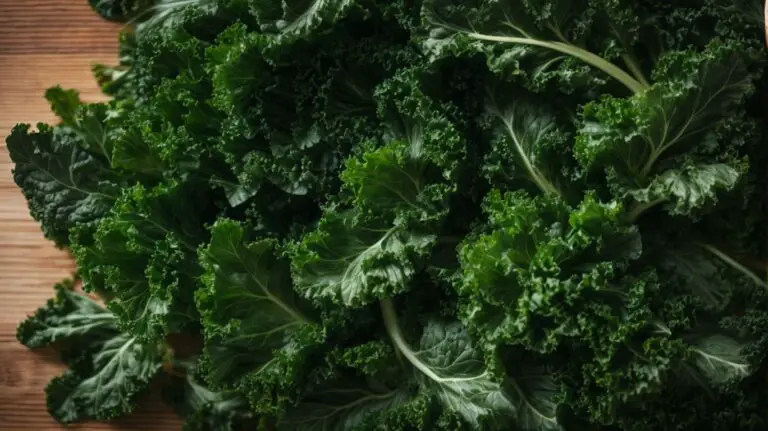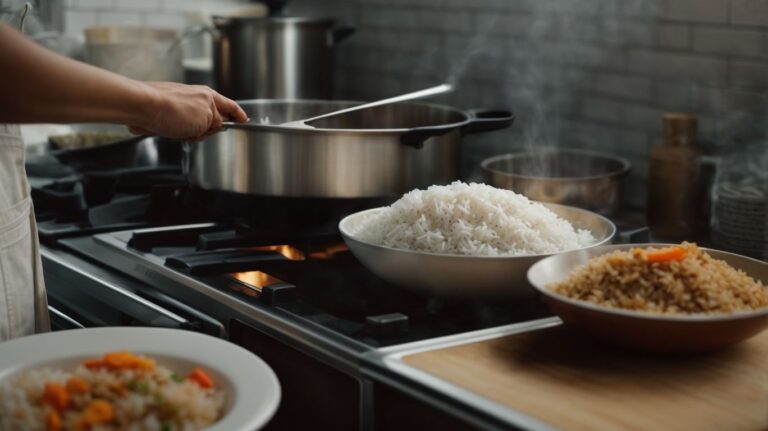How to Cook a Precooked Ham With Glaze?
Looking to impress your guests with a delicious and perfectly cooked precooked ham with a flavorful glaze?
In this article, we will explore what a precooked ham is, how it differs from a regular ham, and the various types of glazes you can use to enhance its flavor.
We will also give you step-by-step instructions on preparing and cooking a precooked ham with glaze using different methods. Get ready with your apron and let’s start cooking!
Key Takeaways:
What is a Precooked Ham?
A precooked ham, also known as a fully cooked ham, is a ham that has been cooked to the desired level before being packaged and sold.
These hams are typically cured and smoked prior to the cooking process, giving them a rich flavor profile. Due to their pre-cooked nature, precooked hams are convenient options for busy households, as they require minimal preparation time.
In terms of cooking them, popular methods include baking, glazing, or even slow-cooking in a crockpot. Some prefer to serve precooked hams sliced as the centerpiece of a festive meal, while others incorporate leftovers into sandwiches, soups, or salads.
How is a Precooked Ham Different from a Regular Ham?
Precooked hams differ from regular hams in that they have already been cooked, reducing the preparation and cooking time needed by the consumer.
In terms of convenience and time-saving in the kitchen, precooked hams offer a significant advantage. With precooked hams, you simply need to heat them up rather than going through the entire cooking process, making them a popular choice for busy households or those looking for hassle-free meal preparation. Precooked hams are often pre-seasoned or glazed, enhancing their flavor profile without much effort on the part of the cook.
What is a Glaze?
A glaze is a mixture of ingredients, often including brown sugar, that is applied to meats such as ham to add flavor and create a caramelized finish during cooking.
This sweet and sticky concoction not only enhances the taste of the ham but also gives it that irresistible glossy sheen that makes it visually appealing. Common ingredients found in glazes besides brown sugar are honey, maple syrup, fruit juices, vinegar, and various spices like cinnamon, cloves, and mustard. The combination of these ingredients creates a balance of sweetness and tanginess that complements the savory nature of the meat.
What are the Common Ingredients in a Ham Glaze?
Common ingredients in a ham glaze include brown sugar, pineapple juice, mustard, and garlic, which combine to create a sweet and savory coating for the ham.
In terms of ham glazes, pineapple juice plays a crucial role in infusing a tropical, fruity essence into the dish. The natural sweetness of the juice balances the savory notes of the ham, adding a refreshing twist to the overall flavor profile. Mustard brings a tangy kick, cutting through the richness of the meat and enhancing its depth of taste. Meanwhile, garlic contributes its aromatic warmth, enriching the glaze with a hint of pungency that complements the sweetness perfectly.
What are Some Variations of Ham Glaze?
Variations of ham glazes may include maple syrup-infused glazes, citrus-based glazes, or spiced glazes, offering diverse flavor profiles to complement different types of ham.
Maple syrup-infused glazes bring a rich sweetness that caramelizes beautifully on the surface of the ham, creating a delectable contrast with the savory meat. On the other hand, citrus-based glazes introduce a tangy brightness that cuts through the richness of the ham, adding a refreshing zing to every bite.
These variations not only cater to different flavor preferences but also play a crucial role in enhancing the overall taste experience of the ham, making it a versatile dish for various occasions.
How to Prepare a Precooked Ham with Glaze?
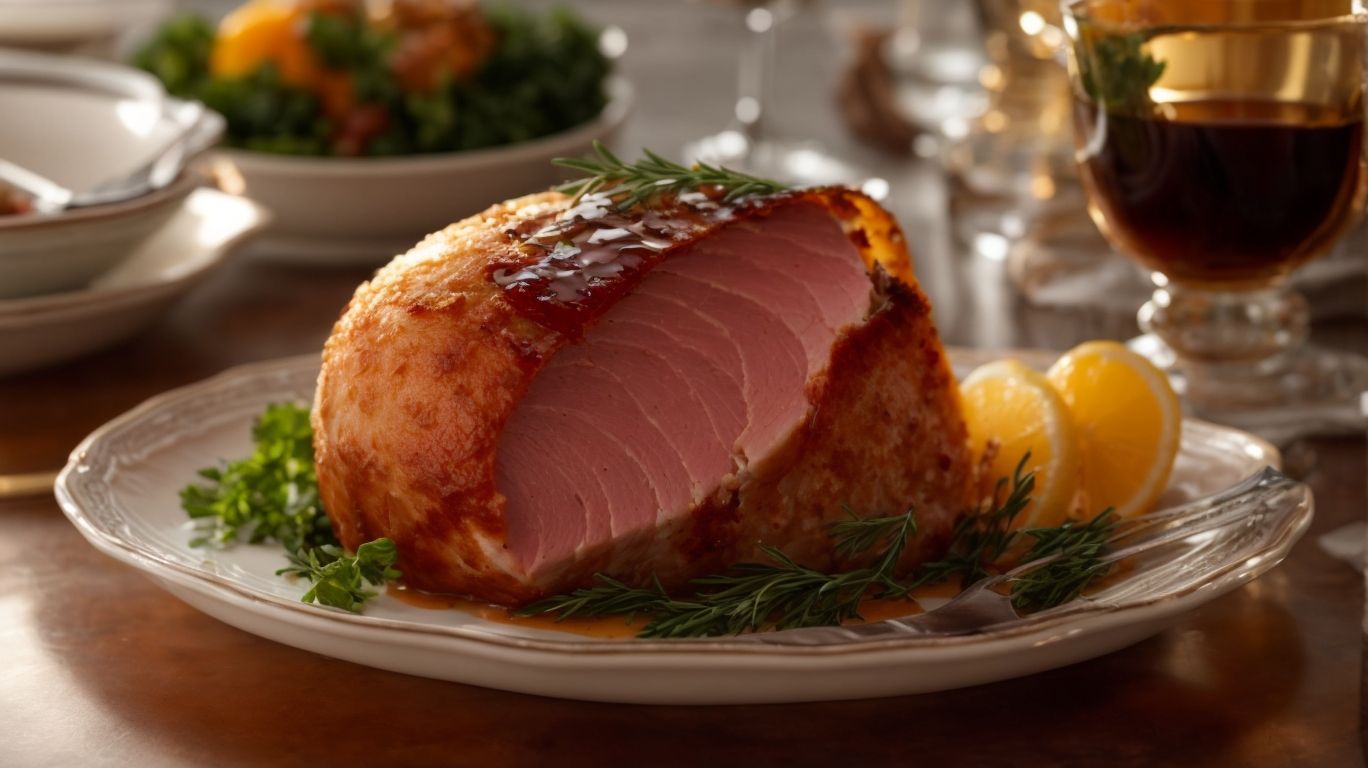
Credits: Poormet.Com – Alexander Martin
Preparing a precooked ham with glaze involves thawing the ham, preparing the glaze mixture, and then applying it to the ham before cooking, ensuring a flavorful and moist end result.
When working with bone-in spiral hams for this cooking process, it’s important to take the ham out of the freezer and allow it to thaw in the refrigerator for a recommended period of time, usually between 24 to 48 hours depending on the size of the ham. Thawing the ham slowly and evenly ensures that it retains its moisture and helps in bringing out the best flavors.
Step 1: Thawing the Ham
Thawing the ham is a crucial initial step in preparing a precooked ham with glaze, ensuring even cooking and optimal flavor retention.
Properly thawing the ham is essential to maintain the quality and taste of the meat. When thawed correctly, the ham will cook more evenly, resulting in a juicier and more flavorful dish. The recommended method for thawing a precooked ham is to place it in the refrigerator. This slow thawing process allows the ham to defrost gradually, reducing the risk of bacterial growth. It is advised to allow approximately 24 hours for every 4 to 5 pounds of ham. Ensure the temperature of the refrigerator is set at or below 40°F (4°C) to prevent spoilage.
Step 2: Preparing the Glaze
Preparing the glaze involves combining ingredients such as brown sugar, mustard, and garlic to create a flavorful mixture that will enhance the taste of the precooked ham.
Once you have gathered the necessary ingredients, start by whisking together the brown sugar, mustard, and minced garlic in a bowl. The brown sugar adds a sweet richness to the glaze, while the mustard brings a tangy kick, and the garlic infuses it with savory depth.
It’s essential to achieve a well-balanced blend of flavors to complement the natural richness of the ham. Adjust the sweetness with additional brown sugar, the tanginess with a touch more mustard, and the savory notes with a hint of garlic until you reach the desired harmony.
Simmer the mixture over low heat, allowing the flavors to meld together and the glaze to thicken slightly. The slow cooking process helps develop a rich, glossy texture that will coat the ham beautifully, perfect for adding that final touch of deliciousness to your dish.
Step 3: Preparing the Ham
Preparing the ham involves scoring the surface, applying the glaze generously, and following specific cooking instructions to ensure a perfectly cooked and flavorful dish.
Before cooking, start by using a sharp knife to score the ham’s surface in a diamond pattern, allowing the glaze to penetrate the meat effectively. Next, choose a delicious glaze mixture, such as a combination of honey, mustard, and brown sugar, to enhance the flavors. Ensure to brush the glaze generously over the ham, making sure to cover every inch for a caramelized finish. In terms of cooking, remember to place the bone-in ham in a roasting pan and bake it at a low temperature, basting regularly to keep it moist and flavorful.
How to Cook a Precooked Ham with Glaze?
Cooking a precooked ham with glaze can be done using various methods, such as baking in the oven, glazing on the stovetop, or using a slow cooker, depending on personal preferences and available equipment.
When baking a precooked ham in the oven, preheat the oven to 325°F (163°C). Place the ham in a roasting pan and cover with foil to keep it moist. Bake for about 10-12 minutes per pound, or until the internal temperature reaches 140°F (60°C). For stovetop glazing, heat the glaze in a saucepan over low heat, then brush it onto the ham as it warms up. The slow cooker method involves placing the ham in the cooker, adding some liquid to keep it moist, and cooking on low for 4-6 hours until heated through.
Method 1: Baking in the Oven
Baking a precooked ham in the oven is a traditional and effective method that ensures even cooking and a flavorful outcome, with recommended temperature settings for best results.
Precooked hams are a convenient option for gatherings and holiday meals, as they are already fully cooked and only need to be reheated. To start, preheat the oven to 325°F (165°C), maintaining a moderate temperature that will prevent the ham from drying out. Place the ham in a roasting pan with a small amount of liquid, like water or broth, to help retain moisture during the cooking process.
Cover the ham loosely with foil to trap steam and maintain moisture levels. For larger hams, you may need to adjust the cooking time accordingly, with an average guideline of about 15-20 minutes per pound of ham. Basting the ham occasionally with its juices or a glaze mixture can enhance flavor and keep the meat succulent.
Method 2: Glazing on the Stovetop
Glazing a precooked ham on the stovetop offers a quick and convenient cooking method, ideal for special occasions or when oven space is limited, providing flexibility in flavor enhancement.
When glazing a precooked ham on the stovetop, you have the advantage of being able to closely monitor the process, ensuring that the glaze caramelizes perfectly without overcooking the ham. This method also allows for more control over the flavors infused into the ham, as you can adjust the seasonings and ingredients according to your taste preferences.
To achieve the desired flavors, consider using a combination of sweet and savory ingredients in your glaze, such as honey, brown sugar, mustard, cloves, or even a hint of citrus for a refreshing twist. These elements complement the natural richness of the ham and create a delectable balance of taste.
Method 3: Using a Slow Cooker
Utilizing a slow cooker to cook a precooked ham with glaze offers a convenient and hands-off approach, resulting in tender meat, reduced cooking time, and easy preparation of leftovers.
Slow cookers are fantastic tools for tenderizing and enhancing the flavors of precooked ham while maintaining its moisture content throughout the cooking process. The gentle, low-heat environment of a slow cooker allows the ham to simmer in its own juices, resulting in a succulent and juicy final dish that is hard to achieve through conventional oven methods.
When cooking precooked ham in a slow cooker, the recommended cooking times usually range from 4 to 6 hours on low heat or 2 to 3 hours on high heat. This slow and gradual cooking process ensures that the ham is heated evenly without drying out, making it a great option for busy individuals looking for a hassle-free meal solution.
Storage Tip: Leftover ham can be wrapped tightly in foil or stored in an airtight container in the refrigerator for up to 3-4 days, offering versatile options for reinventing it in sandwiches, salads, or casseroles. Slow cooking not only simplifies the initial cooking process but also extends the enjoyment of the ham with delicious leftovers.
How to Serve a Precooked Ham with Glaze?
Serving a precooked ham with glaze can elevate any meal, making it perfect for special occasions like Christmas or Easter gatherings, with versatile pairing options for side dishes.
When presenting a succulent precooked ham with glaze, consider carving it at the table for a touch of elegance and a dramatic effect that impresses your guests. To serve, lay out the slices beautifully on a platter or arrange them around the glazed ham centerpiece to create a visually appealing spread. Enhance the festive mood by incorporating decorative garnishes like fresh herbs or citrus slices. Pair this flavorful main dish with classic sides such as creamy mashed potatoes, roasted vegetables, or a tangy cranberry sauce for a well-rounded and satisfying meal.
What Side Dishes Go Well with Precooked Ham with Glaze?
Side dishes that pair well with precooked ham and glaze include classic options like scalloped potatoes, green bean casserole, or cranberry sauce, enhancing the overall flavor profile of the meal.
To complement the richness of the ham, consider serving a fresh garden salad with a light vinaigrette dressing, adding a refreshing contrast to the savory flavors. Incorporating citrus-infused roasted carrots can also be a delightful choice, providing a hint of sweetness alongside a vibrant touch of citrus. For a textural contrast, crispy Brussels sprouts roasted with bacon or balsamic glaze can offer a satisfying crunch. A sweet potato casserole with a buttery pecan topping can bring a sweet and nutty element to balance the savory ham.
How to Store Leftover Precooked Ham with Glaze?
Storing leftover precooked ham with glaze involves proper refrigeration in airtight containers, ensuring food safety and flavor retention for future consumption or repurposing.
When refrigerating precooked ham, it’s advisable to label the containers with the date of storage. This helps in monitoring freshness and avoiding food spoilage. Storing the ham on a shelf rather than in the refrigerator door can maintain a more consistent temperature, which is crucial for preserving the glaze’s texture and taste.
Before refrigerating the ham, allow it to cool completely to room temperature to prevent condensation inside the container. Properly cooled ham helps maintain the glaze’s integrity and prevents moisture build-up, which can impact the overall quality of the leftovers.
Tips and Tricks for Cooking a Perfect Precooked Ham with Glaze
Achieving a perfect precooked ham with glaze requires attention to detail and a few culinary tricks, such as basting the ham during cooking, monitoring internal temperature, and experimenting with different glaze variations.
When preparing a precooked ham for your next meal, consider selecting a high-quality ham that has been fully cooked to ensure a delicious outcome. To enhance the flavor profile, basting the ham throughout the cooking process can help keep it moist and tender. Ensure that you use a meat thermometer to monitor the internal temperature to avoid overcooking, as this can result in dry meat. Get creative with your glaze experimentation by combining ingredients like honey, mustard, brown sugar, or even fruit preserves to find a flavor that suits your taste preferences.
Frequently Asked Questions
1. How do I properly cook a precooked ham with glaze?
Precooked hams can be a lifesaver for a quick and easy meal. To cook it with glaze, preheat your oven to 325°F and place the ham in a shallow baking dish. Brush the glaze over the ham, cover with foil, and bake for 10 minutes per pound.
2. Can I use any type of glaze for my precooked ham?
Yes, you can use any type of glaze to add flavor to your precooked ham. Popular glaze options include honey, brown sugar, and maple syrup. Experiment with different flavors to find your favorite.
3. How long should I cook a precooked ham with glaze?
The rule of thumb is to cook the ham for 10 minutes per pound. However, it’s always best to check the internal temperature with a meat thermometer. The ham should reach an internal temperature of 140°F.
4. Do I need to baste the ham while it’s cooking?
Basting is not necessary for a precooked ham. Just make sure to cover the ham with foil to prevent the glaze from burning.
5. Can I use the glaze that comes with the precooked ham?
You can use the glaze that comes with the ham, but it may not be enough for your liking. You can add more glaze or make your own to ensure a flavorful and well-coated ham.
6. Can I cook a precooked ham with glaze in a slow cooker?
Yes, you can cook a precooked ham with glaze in a slow cooker. However, the glaze may not caramelize as it would in the oven. It’s best to finish the ham in the oven for a few minutes to achieve a crispy glaze.

